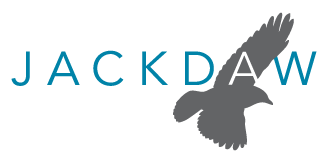Google today held the keynote for its I/O developer event. As usual, there was a disparate set of news from Google. The comment below may be attributed to Jan Dawson, Chief Analyst at Jackdaw Research. Jan may also be reached at (408) 744-6244 or jan@jackdawresearch.com and is also on-site at I/O today for in-person interviews.
Google’s event today was surprisingly short on major news, and especially on surprises. Much of what was announced was trailed ahead of time, and the Android announcements in particular were very short on notable news. The Android M release was described as being focused on quality and polish, but it felt like the other major focus was catching up with Apple, with lots of key features basically attempts at achieving parity with the iPhone. Android Pay feels like an Apple Pay clone without the base of fingerprint sensors to work with and a lack of control over the full stack. The changes to permissions also bring Android in line with iOS, where they always should have been. On Android Wear, too, there was little new, especially given the enhancements over the last few months, and it feels like the Apple Watch will do more for Android Wear interest and adoption than Google and its OEMs will over the coming year.
Brillo was arguably the biggest news of the day, as it’s a big step forward in the Internet of Things domain. Lots of IoT applications are already using Android, but Android hasn’t been optimized for these applications to date, with the OS both over-featured for most applications, and lacking IoT-specific features like communication protocols for connecting with other devices. Project Brillo feels like it could fix both of those problems, and is the first real IoT-specific platform from a company which many would-be adopters already see as a natural fit for the space. However, it also feels like this project is in the early stages, and it remains to be seen exactly when it will hit the market and start to have a significant impact.
On the consumer-facing side, Google Photos feels like the biggest announcement. Photos solves two real problems for users: consolidating all their photos in one place without having to pay an arm and a leg, and managing them automatically on behalf of users without requiring tons of human intervention. The availability across Android, iOS, and the web is another useful feature. Separating Google’s photos feature from Google Plus is huge, because it both resolves concerns about keeping your photos in a social network and gets away from the perceptions of failure associated with the social network. The photos feature always should have been independent, and it’s a good thing that it now is.
Google Now on Tap is a great example of Google’s unique skill set in machine learning and its application to real-world problems. This continues to be what Google is best at, and the advancements shown today were a great illustration of that skill set. It’s also reassuring that Google recognized that not all people’s needs will be met by its own Knowledge Graph, and that Google Now cards will continue to expand the amount of third party app content they show users. However, the Chrome Custom Tabs feature for developers felt like an effort moving in the opposite direction, taking users back out of apps and onto the web, something which clearly benefits Google.
In virtual reality, it continues to feel like Google is trying to do virtual reality on the cheap, which may not be a bad strategy. Leveraging the devices people already have rather than forcing them to buy expensive dedicated hardware dramatically increase the addressable market while giving people more value from the phones they already own. The Expeditions project looks interesting, but we got no real information about pricing for the education market here, and that will be critical to its ability to succeed. It’s also disconnected from Google’s other major education efforts, which have focused largely on Chromebooks. The partnership with GoPro looks like a great fit for both companies – Google doesn’t want to develop cameras, and GoPro badly needs more unique IP to differentiate its products in the coming years. The fact that much of the Jump intellectual property will be open sourced, however, mitigates the positive impact for GoPro somewhat, though it’ll clearly have a head start.
